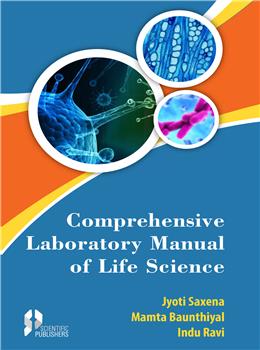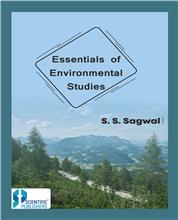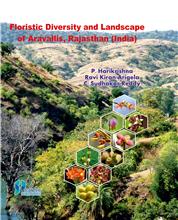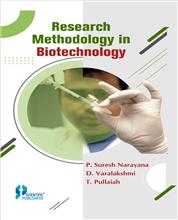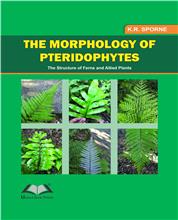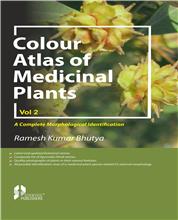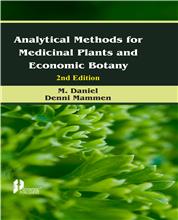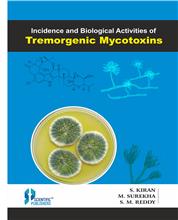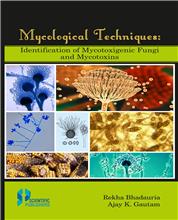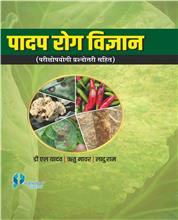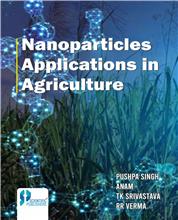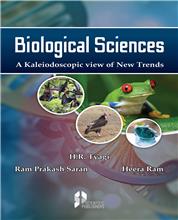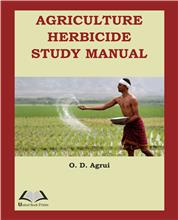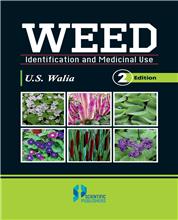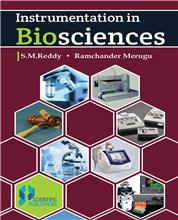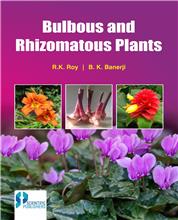1 INTRODUCTION
1. Laboratory Etiquette and Safety
2. Good Laboratory Practices
3. Maintenance of Distillation Apparatus
4. Washing of Glassware
5. Washing of Plastic Apparatus
6. Dry Sterilization
7. Handling of Pipette
8. Molecular, Empirical and Formula Weight
9. Planning a solution of a particular molarity
10. Making solutions from hydrated compounds
11. Measurement of Liquids with Normality/Molarity
12. Numbers Found on Chemical Bottles
13. Accuracy and Calibration
14. Buffers
2 INSTRUMENTS : PRINCIPLE AND PRECAUTIONS
1. Weighing Balance
2. Spectrophotometer
3. Laminar Flow Hood
4. Autoclave
5. Centrifuge
6. pH Meter
7. Incubator
8. Hot Air Oven
9. Compound Microscope
10. ELISA Reader
3. EXPERIMENTS
A. MICROBIOLOGY . . .
Introduction
1.1 Micrometery and Measurement of Micro-organisms
1.1.1. Calibration of Microscope by using Ocular and Stage Micrometer
1.1.2. Measurement of Size of Micro-organism/Spore
1.2 Preparation of Culture Media
1.2.1 Preparation of Liquid Culture Medium (Broth)
1.2.2 Preparation of Solid Medium
1.2.3 Preparation of Agar Plates and Agar Slants
1.2.4 Demonstration of Selective and Differential Media
1.2.4.1 Eosine Methylene Blue (EMB) medium
1.2.4.2 Mannitol Salt Agar
1.2.4.3 Pikovskaya Agar
1.3 Aseptic Methods
1.3.1 Physical Methods of Sterilization
1.3.2 Chemical Methods of Sterilization
1.3.3 Gaseous Sterilization
1.4 Cultivation Techniques
1.4.1 To isolate the Microorganisms by Streak Plate Method
1.4.2 To Isolate the Microorganisms by Pour PlateTechnique
1.4.3 To Isolate the Microorganisms by Spread Plate Technique
1.4.4 To Isolate the Microorganisms by Serial Dilution Technique (or viable plate count method)
1.5 Preservation and Maintenance of Culture
1.5.1 Maintenance by Sub-culturing
1.5.2 To Prepare Agar Slants with Mineral Oil (Paraffin Method)
1.5.3 Storage in Soil
1.5.4 To Store the Cultures in Liquid Nitrogen
1.5.5 To Store the Culture at -70°C
1.5.6 To Preserve the Cultures by Lyophilization (Freeze drying)
1.6 Staining Techniques
1.6.1 Preparation of Bacterial Smear and Fixation
1.6.2 Simple Staining of Bacteria
1.6.3 Negative Staining of Bacteria
1.6.4 Gram Staining of Bacteria
1.6.5 Acid-fast Staining
1.6.6 Endospore Staining
1.6.6.1 Endospore staining by malachite green
1.6.6.2 Endospore staining by Dorner’s method
1.6.7 Capsule Staining to Detect the Capsule or Slime Layer in Bacteria
1.6.8 Flagella Staining
1.6.8.1 Lee’s method
1.6.8.2 Leifson’s method
1.6.9 To Test the Viability of Bacteria by Staining
1.6.10 Staining of Fungi
1.6.11 Staining of Arbuscular Mycorrhiza (AM)
1.7 Isolation and Enumeration of Microbes
1.7.1 Isolation and Enumeration of Fungi from Soil
1.7.1.1 Isolation of fungi by dilution plate method
1.7.1.2 Isolation of fungi by Warcup method
1.7.2 Isolation of Seed Microflora
1.7.2.1 Agar plate method (ISTA, 1966)
1.7.2.2 Blotter method
1.7.3 Isolation of Aeromycoflora
1.7.4 Isolation of Arbuscular Mycorrhizal (AM) Spores from the Soil
1.7.4.1 Wet-sieving method
1.7.4.2 Floatation method
1.7.5 Isolation and Enumeration of Microorganisms from Rhizosphere
1.7.6 Isolation of Microorganisms from Rhizoplane
1.7.7 Isolation of Protozoa from Soil
1.7.8 Isolation of Cyanobacteria
1.7.9. Isolation of Aquatic Fungi by Baiting Method
1.7.10 Isolation of Yeast
1.7.11 Isolation of Rhizobia from the Root Nodules
1.7.12 Isolation and Cultivation of Anaerobic Bacteria
1.7.12.1 Candle jar method
1.7.12.2 Gaspak anaerobic jar method
1.7.13 Analysis and Enumeration of Bacteria in Milk
1.7.14 Presumptive Test for Coliforms to Check the Quality of Milk
1.7.15 Microbiological Examination of Cheese
1.7.16 Microbiological Examination of Butter
1.8 Counting of Cells/Spores
1.8.1 Measurement of Cells/Spores by Counting Chamber (Hemocytometer procedure)
1.8.2 Counting of Cells by Serial Dilution Technique (Viable cell count)
1.8.3 Counting of Bacterial Population Spectrophotometrically
1.9 Microbial Growth
1.9.1 Determination of Bacterial Growth Curve by Spectrophotometric Method
1.9.2 Measurement of Fungal Growth by Colony Diameter Method
1.9.3 Measurement of Fungal Growth by Dry Weight of Mycelium
1.9.4 Estimation of Biomass
1.9.4.1 Dry cell weight estimation
1.9.4.2 Packed cell volume (PCV) determination
1.9.5 Effect of Temperature on Growth of Fungi/Bacteria
1.9.6 Effect of pH on Growth
1.9.7 Determination of Antibiotic Sensitivity by Disc Method
1.10 Fermentation Technology
1.10.1 Estimation of Lactic Acid in Curd
1.10.2 Production and Estimation of Citric Acid by Aspergillus niger
1.10.3 Estimation of Growth and Product Yield During Bioconversion of Tannic Acid to Gallic Acid by Aspergillus niger MTCC 282
1.10.4 Determination of Alcohol Production in the Fermented Broth
1.10.5 Alpha-amylase Biosynthesis and Measurement of its Activity
1.11 Mushroom Cultivation
1.11.1 Production of Spawn for White Button Mushroom (Agaricus bisporus)
1.11.2 Cultivation of White Button Mushroom
B. BIOCHEMISTRY . . . [130–255]
Introduction
2.1 Carbohydrates
2.1.1 Qualitative test for Carbohydrates
2.1.1.1 Molisch’s Test
2.1.1.2 Iodine Test
2.1.1.3 Barfoed’s Test
2.1.1.4. Seliwanoff’s Test
2.1.1.5 Fehling’s Test
2.1.1.6 Benedict’s Test
2.1.1.7 Bial’s Test
2.1.1.8 Osazone Test
2.1.1.9 Test for non-reducing sugars
2.1.2 Quantitative Test for Carbohydrates
2.1.2.1 Determination of total carbohydrate by Anthrone reagent
2.1.2.2 Determination of reducing sugar by Nelson-Somogyi method
2.1.2.3 Determination of Cellulose
2.2 Amino Acids and Proteins
2.2.1 Colour Reaction of Proteins/Amino Acids
2.2.2 Titration Curve of Amino Acids
2.2.3 Protein Assay Methods
2.2.3.1 λ max for protein and amino acids
2.2.3.2 Determination of molar absorbance coefficient (ε) of L-tyrosine
2.2.3.3 Lowry method of protein assay
2.2.3.4 Bradford protein assay
2.2.3.5 Bicinchoninic Acid (BCA) Protein Assay
2.2.3.6 Biuret Protein Assay
2.2.4 The Isolation of Casein from Milk
2.2.5 Ammonium Sulphate Fractionation of Proteins
2.3 Enzymes
2.3.1 Extraction and Purification of Enzyme: General Strategies
2.3.2 Expression of enzyme activity
2.3.2.1 To study the effect of pH and temperature on activity of acid phosphatase (AP)
2.3.2.2 Purification of acid phosphatase from raw wheat germ
2.3.2.3 To determine the Km and Vmax value of acid phosphatase
2.3.3 Extraction and assay of enzymes
2.3.3.1 Malate dehydrogenase (EC 1.1.1.37)
2.3.3.2 Peroxidase (E.C. 1.11.1.7)
2.3.3.3 Polyphenol Oxidase (EC 1.14.18.1)
2.3.3.4 Determination of salivary amylase activity
2.3.3.5 Papain (Papainase, EC 3.4.22.2)
2.3.4 Immobilization of an Enzyme
2.4 Lipids
2.4.1 Qualitative Tests of Lipids
2.4.1.1 Solubility Test for Lipids
2.4.1.2 Grease Spot Test
2.4.1.3 Acrolein Test for Glycerol
2.4.1.4 Liebermann-Burchard Test for Cholesterol
2.4.2 Determination of Free Fatty Acids
2.4.3 Determination of Iodine Number
2.4.4 Determination of Saponification value
2.4.5 Estimation of Serum Cholesterol (Total)
2.5 Nucleic Acids
2.5.1 Determination of λ max of DNA
2.5.2 Determination of DNA by Diphenylamine Method
2.5.3 Determination of RNA by Orcinol Method
2.6 Cell Organelles
2.6.1 Isolation of Mitochondria
2.6.1.1 To isolate mitochondria from plant leaves
2.6.1.2 To Isolate Mitochondria from Rat Liver
2.6.2 Isolation of Chloroplasts from Plant Leaves
2.7 Plant Pigments and Phenolics
2.7.1 Chlorophylls
2.7.2 Carotenes
2.7.3 Lycopene
2.7.4 Phenols
2.8 Vitamins
2.8.1 Determination of Thiamine
2.8.2 Estimation of Ascorbic Acid in Lemon Juice
2.8.3 Measurement of Riboflavin (Vitamin B2) in Human Urine
2.8.4 Estimation of Vitamin A
2.9 Biochemical Separation Techniques
2.9.1 Paper Chromatography
2.9.1.1 Separation of Amino Acids by one Dimensional Paper Chromatography
2.9.2 Separation of Plant Pigments by Thin Layer Chromatography (TLC)
2.9.3 Separation of Blue-dextran and Potassium Dichromate by Gel–Filtration Chromatography
2.9.4 To Separate Proteins by SDS – PAGE
2.9.5 Silver Staining of Proteins
2.9.6 Separation of Proteins by Isoelectric Focusing
C. MOLECULAR BIOLOGY . . . [256–329]
Introduction
3.1 Isolation of Nucleic Acid
3.1.1 Isolation of DNA
3.1.1.1 Rapid Method For Isolation of Plasmid DNA
3.1.1.2 Isolation E. coli genomic DNA
3.1.1.3 Isolation of bacteriophage DNA
3.1.1.4 Extraction of plant DNA using CTAB
3.1.1.5 Isolation of mammalian DNA
3.1.1.6 Isolation of chloroplast DNA
3.1.1.7 Isolation of mitochondrial DNA
3.1.1.8 Agarose gel electrophoresis of DNA
3.1.2 RNA Isolation
3.1.2.1 Isolation of total RNA
3.1.2.2 Isolation of messenger RNA
3.1.2.3 Agarose gel electrophoresis of RNA
3.1.2.4 Quantification of DNA/RNA
3.1.2.5 Determination of DNA quality
3.2 Denaturation and Renaturation of DNA
3.2.1 Determination of Melting Temperature (Tm value)/ Melting Curve of DNA
3.2.2. Determination of GC/AT (Base composition) Content of DNA
3.3 Restriction Digestion
3.3.1 Restriction Digestion of DNA
3.3.2 Preparation of Agarose Gels and Running of Digested and Undigested DNA (Gel Electrophoresis)
3.4 Polymerase Chain Reaction (PCR)
3.4.1 DNA Amplification by PCR
3.4.2 RAPD (Random Amplified Polymorphic DNA) Analysis of Different Plant Genotypes
3.4.3 PCR Amplification of 16s Ribosomal RNA
3.5 Blotting Techniques and Hybridization
3.5.1 Southern Hybridization
3.5.2 Northern Blotting and Hybridization
3.5.3 Western Blotting and Hybridization
3.6 Ligation and Transformation of Bacterial DNA (E. Coli)
3.6.1 Ligation
3.6.2 Preparation of Competent Cells
3.6.3 Transformation of E. coli
3.6.4 Transformation of Plant Cells using Agrobacterium tumifaciens
3.6.5 Isolation of Plant Protoplasts
3.7 Selection of Recombinant Cells
3.7.1 Selection by Insertional Inactivation of Antibiotic Resistance Gene
3.7.2 Lac Z’ gene Selection
3.7.3 GUS Assay
D. IMMUNOLOGY . . . [330–353]
Introduction
4.1 To collect the Serum from blood
4.2 To prepare the blood film and identify leucocytes
4.3 To determine ABO blood types by slide agglutination reaction
4.4 To isolate and purify sheep IgG from whole sheep serum and determine its concentration
4.5 To perform double Immunodiffusion by Ouchterlony method.
4.6 To perform Immunoelectrophoresis
4.7 To perform Enzyme linked immunosorbent assay (ELISA)
4.7.1 To detect the antibodies using direct ELISA
4.7.2 To detect the antibodies using indirect ELISA
E. ENVIRONMENTAL BIOTECHNOLOGY . . . [354–381]
Introduction
5.1 To determine the organic carbon content in soil
5.2 Determination of Total Dissolved Solids in Waste Water Sample
5.3 To determine the Dissolved Oxygen (DO) in given water sample by Winkler’s method
5.4 To determine the Biological Oxygen Demand (BOD5 at 20°C) of given sample of waste water
5.5 To determine Chemical Oxygen Demand (COD) in waste water sample
5.6 Analysis of total hardness of waste water sample
5.7 Detection of coliforms for determination of the purity of potable water
5.8 Estimation of the pesticide residues in soil sample
5.9 Determination of LD50 of a given pesticide
5.10 Determination of Fluoride Content in Water Sample
REFERENCES
APPENDIX
Appendix IV A : Microbiology
Appendix IV B : Biochemistry
Appendix IV C : Molecular Biology
Appendix IV D : Immunology
Appendix IV E : Environmental Biotechnology
INDEX
Index for Microbiology
Index for Biochemistry
Index for Molecular Biology
Index for Immunology
Index for Environmental Biology
